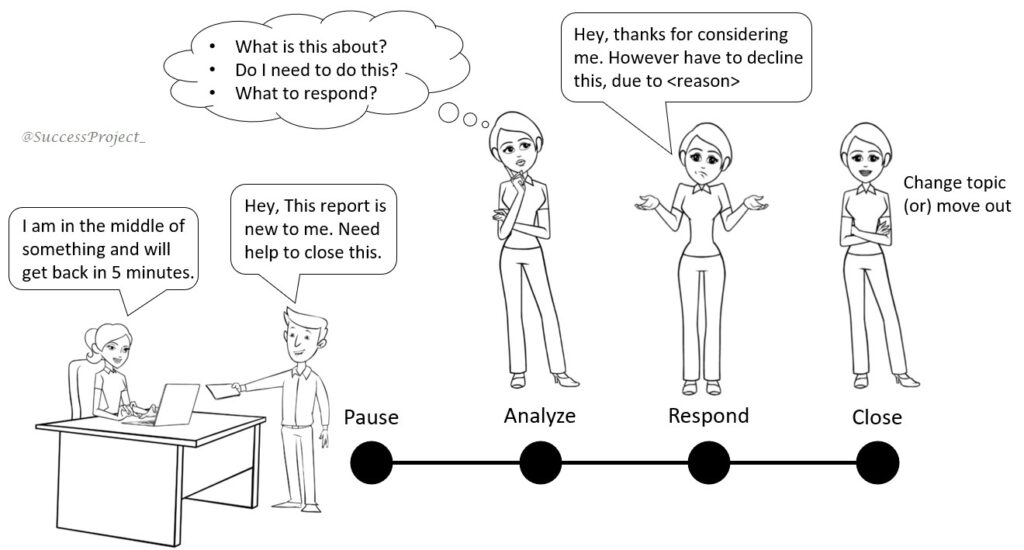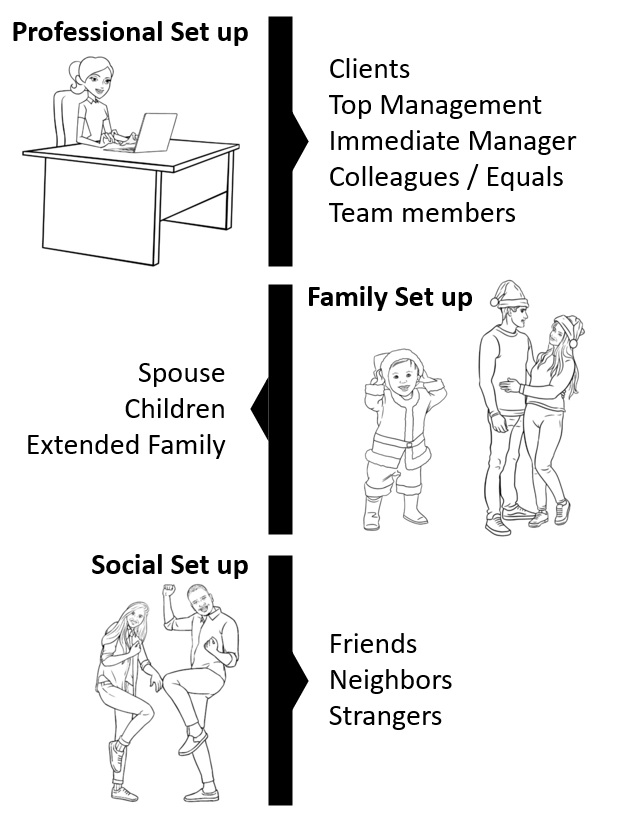In the last blog, I discussed: Say No
- My miserable life as a ‘Yes’ man (People Pleaser),
- Challenges that I faced when starting to say ‘No’ and
- My transformation journey to a ‘No’ man (Standing for myself)
In this blog, I will share a few key learnings and tips from my journey.
(Featured image credits: Photo by Vie Studio from Pexels)
Hi, This is Venkatesh. I write on Personal Finance, Stock Investing, Productivity and Time Management. You will be interested to read more about me and the purpose of my website.
If you are interested in these topics do subscribe to my blogs. You would maximum receive 4 to 5 emails a month.
You might also be interested to read these related articles:
In the last blog, we saw a few challenges that I faced being a ‘Yes’ man. Below is a more detailed list of impacts due to your ‘Yes’. Say No
- Your priorities and existing commitment to others take a back seat, thereby making their schedules much dearer/tighter.
- Lesser time and attention to your commitments affects the quality of work
- You end up overworking and/or overburdened by these additional tasks (That come as requests)
- You do things, that are not important to you or your goals
- Lack of time for self-development, hobbies, vacation, personal and social life
- You feel exhausted, exploited, frustrated, stressed, angry, helpless, resentful and irritable – All this affects your mental health. The most interesting thing is that you would not be able to show any of these emotions in the workplace.
Lastly…Saying ‘Yes’ when you want to say ‘No’ is being dishonest to you and others as well.
The Reasons
You would be wondering if there was so much impact, then saying ‘No’ is the right thing to do. However, it is not easy. We hesitate to use this tiny little word. A few reasons are:
- Our Value System: The social programming that ‘No’ to others is hurting them and being rude.
- Self-Image: We like to be seen as friendly and caring instead of rude, selfish and self-centred.
- Our Personality: Lack of Self-Confidence, Self-Esteem, and Assertiveness.
- Fear of Missing Opportunities: We fear losing career progression by saying ‘No’. This is one main reason that we hesitate to say ‘No’ to our managers.
- Lack of awareness: This is the most important. We know that we should be saying ‘No’, but do not know how to do properly. The main reason is that we were never taught to do so.
Burst your Myths
There are many myths/beliefs we carry that prevent us from saying ‘No’. It comes from years of social programming right from our younger days. It could be from our Parents, Family Elders, Teachers, Friends and so on. A few of the myths/beliefs are:
- Saying ‘No’ is selfish
- Saying ‘No’ makes you feel guilty
- Saying ‘No’ is Negative
- Saying ‘No’ leads to conflict
- Your requestor is giving a command
- Your requestor suffers due to your ‘No’
- Your requestor would be hurt
- You need to be aggressive or rude to say ‘No’
- Relationships would suffer
You need to burst all these myths – None of these is valid, as long as you say ‘No’ in the right way.
What is the right way?
This is an elaborate topic. However, for the sake of brevity given below are a few quick actionable strategies.
- Proper Verbal Communication: You need to give a direct, clear, and brief reply. The reply has the reason for your ‘No’.
- Be Candid: You need to be honest about your reason to say ‘No’. Do not tell lies. Truth has its power. An exposed lie (False reason) ruins your credibility in both past and future engagements.
- Be Polite: It is not needed to be aggressive or rude to say ‘No’. You are not going to war. Do not be loud or rude when you reply.
- Compromise: Choose this option only in an unavoidable situation. It is like, “instead of X1, X2 and x3, I can help you in X1 alone, due to <reason>”
- Never apologize: You are not doing a mistake. You are only protecting your boundaries. Saying an apology weakens your position and gives you the guilt of doing a mistake.
- Close the conversation: After you communicate your reason, close the conversation. This can be done by moving out of the place or changing the topic. This is very important. Since staying in the conversation gives your requestor a chance to persist or convince by bringing in some urgency like “This is very important than your delivery”.
Steps to Say your Rightful ‘No’ in the Right Manner
Step 1 - Pause
When someone comes with a request, pace down. You need to break the instinct to say ‘Yes’, which you did all the years. A simple sentence, “I am in the middle of something, I will get back to you in xx minutes” can do this magic.
Step 2 - Analyse
After the pause takes a few minutes to analyse the request. See if it is something that you need to do or related to your goals/priorities. If you need to respond with ‘No’, choose your response/reason.
Step 3 - Respond
Thank your requestor for considering you. This is to be followed with the reason to decline. At this stage, remember the strategies that we saw previously. Be polite, be candid in your reason, and do not apologize.
Do not say something like, “Sorry, I am not able to do this for you” (‘Sorry’ should not be used).
Step 4 - Close
Close the conversation by moving out of the place or changing the conversation. Moving out is ideal as it does not give a chance to the requestor to pursue their request further.

One Size does not Fit All
All my learnings and experience in this topic are vast enough to go in a book. It is almost a 25+ years journey. I will, however, share the key learnings, hacks and ‘How-To’ in my next blog.

However, you may need to tweak your approach in other situations. A few key things to note are:
Client
In the case of a frequent client, who is accommodative or brings in more revenue, see how best you can accommodate them. In this scenario, ‘Yes’ will be the best response in the interest of a long-term professional relationship.
There would always be a few clients on your list, who make unreasonable demands or be aggressive or squeeze out more than what they pay. Here giving ‘No’, is the best thing for you to do.
Managers
You meet your manager daily and also have a long-term relationship. You need to analyse if the request is urgent/important, and discuss your current priorities/availability before saying ‘No’. At times you need to negotiate and re-prioritize your current works in place of new requests. The key thing to do in this situation is, even if you respond with ‘No’, help your manager with options to close the request.
Spouse
If it is a reasonable request try to negotiate or find alternatives. Try to find a solution together. Both of you understand well and know each other likes, dislikes and limitations. This understanding help even if the response is ‘No’.
Kids
You need to explain more. They are too young to understand your reason. Explain in a manner they can understand. Your ‘No’ mustn’t hurt them. If need go for a compromise, “You can have X for dinner, instead of Y this one time.”
Strangers
You are not emotionally connected, nor would you be seeing them again. This is a low-risk situation where you can say ‘No’ without any hesitation or much reasoning.
Start NOw
(The above ‘Now” is deliberately shown with the first two words in Caps!)
You have the high-level map to your journey to say ‘No’. Start in low-risk scenarios like strangers, loan/marketing calls or food chains (When they push for bundled offers, that you are not interested in).
Then graduate to scenarios involving your team members and equals. Then handle more delicate scenarios involving your manager and clients.
Good luck on your journey.
Hope you found this blog useful. Do share my blogs with your friends, peers and fellow investors.

